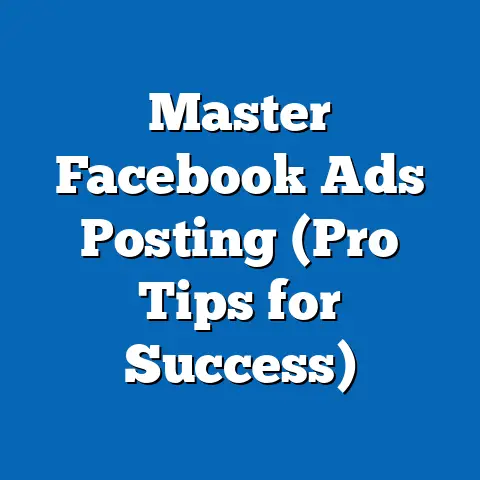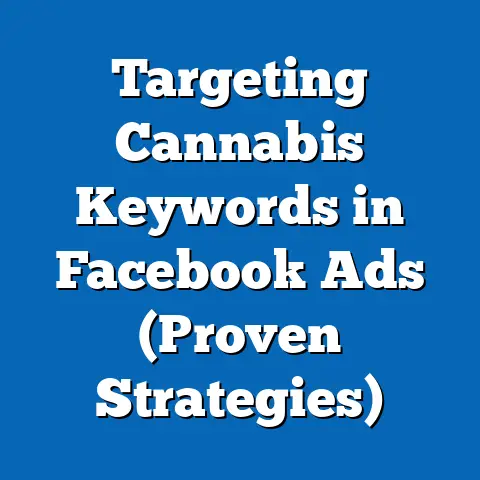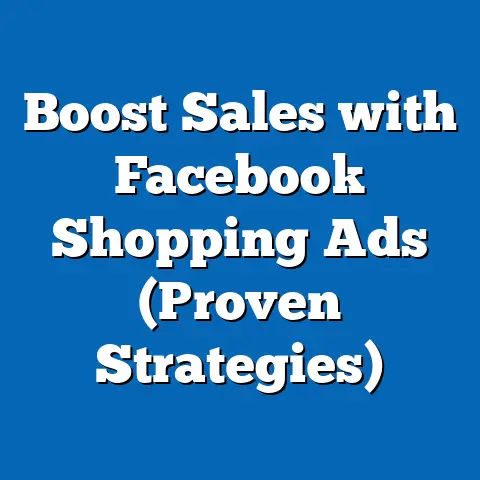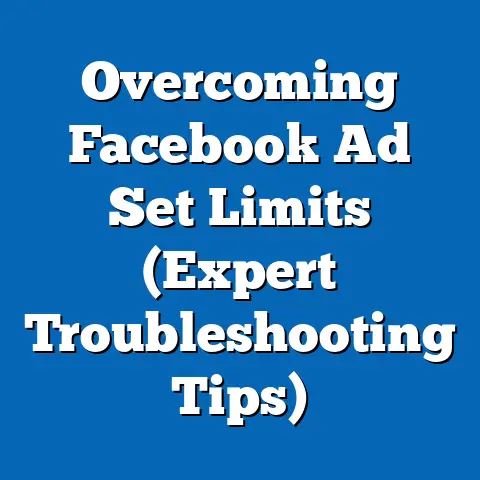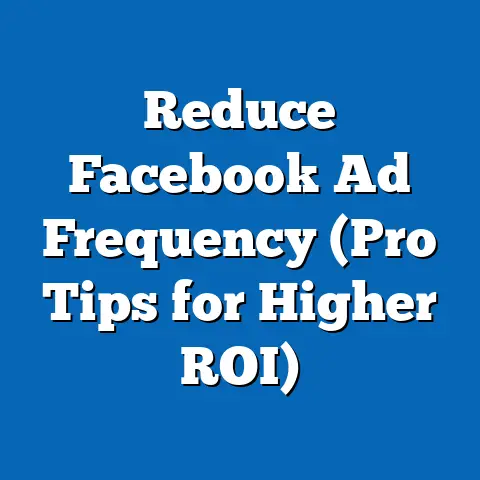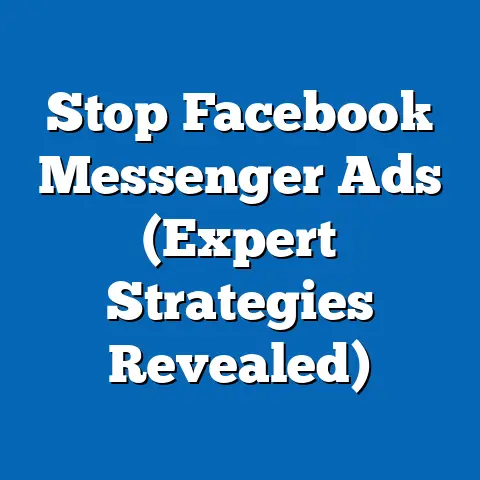Unlock Facebook Marketplace Ads (Expert Tips Revealed)
I’ve spent years helping businesses leverage the power of Facebook, and I’ve seen firsthand how Marketplace, when used correctly, can be a game-changer. It’s not just about throwing up a picture and hoping for the best. It’s about understanding the platform, crafting compelling ads, and engaging with potential buyers in a way that builds trust and drives conversions.
In this guide, I’m going to pull back the curtain and share my expert tips for unlocking the full potential of Facebook Marketplace Ads. We’ll dive deep into everything from setting up your account to analyzing your performance, ensuring you’re equipped with the knowledge and strategies you need to succeed. So, whether you’re selling handmade jewelry, vintage furniture, or even a slightly used pet rock (hey, no judgment!), get ready to transform your Marketplace listings into a revenue-generating machine.
Section 1: Understanding Facebook Marketplace Ads
What is Facebook Marketplace?
Facebook Marketplace is a digital marketplace within Facebook, where users can buy and sell items locally. Think of it as your online neighborhood garage sale, but with the potential to reach a far wider audience. Unlike traditional Facebook Ads, which are displayed in users’ newsfeeds, Marketplace listings appear directly within the Marketplace tab, making them highly visible to people actively searching for products.
Why is Marketplace Important for E-commerce?
In today’s e-commerce landscape, standing out is crucial. Facebook Marketplace offers several advantages:
- Massive Reach: With billions of active users on Facebook, Marketplace provides access to a vast potential customer base.
- Local Focus: Marketplace allows you to target buyers in your local area, making it ideal for businesses with physical locations or those offering local services.
- Organic Visibility: Listings are displayed organically to users browsing Marketplace, providing free exposure to potential buyers.
- Integration with Facebook: Seamless integration with Facebook Messenger allows for easy communication with potential buyers.
- Cost-Effective: While paid advertising options are available, you can achieve significant results through organic listings alone.
Facebook Marketplace: A Growing Trend
The numbers don’t lie. Facebook Marketplace has seen explosive growth in recent years. Consider these statistics:
- Billions in Transactions: Millions of users actively buy and sell on the Marketplace every month, resulting in billions of dollars in transactions annually.
- Mobile Dominance: The vast majority of Marketplace users access the platform via mobile devices, highlighting the importance of mobile-optimized listings.
- Gen Z and Millennials: These demographics are highly active on Marketplace, making it a prime platform for reaching younger audiences.
Takeaway: Facebook Marketplace is a powerful e-commerce platform with massive reach, local focus, and organic visibility. Understanding its significance in the current market is the first step to unlocking its potential.
Section 2: Setting Up Your Facebook Marketplace Account
Creating or Optimizing Your Facebook Account
Your Facebook account is the foundation of your Marketplace presence. A credible and professional account builds trust with potential buyers. Here’s how to set it up for success:
- Use a Real Name and Profile Picture: Avoid using nicknames or generic profile pictures. A clear, professional headshot (or your business logo) is ideal.
- Complete Your Profile: Fill out all the sections of your profile, including your “About” section, work experience, and education. This helps establish your credibility.
- Privacy Settings: Adjust your privacy settings to control who can see your posts and profile information. Consider making your profile public to increase visibility.
- Two-Factor Authentication: Enable two-factor authentication to protect your account from unauthorized access.
Building a Credible Seller Profile
Your seller profile is your digital storefront. It’s the first impression you make on potential buyers. Here’s how to make it count:
- Professional Profile Picture: Use a high-quality photo of yourself or your business logo.
- Compelling Bio: Write a brief but engaging bio that highlights your experience, expertise, and commitment to customer satisfaction.
- Trust Signals: Include trust signals, such as positive reviews, testimonials, or certifications, to build confidence with potential buyers.
- Contact Information: Provide accurate and up-to-date contact information, including your email address and phone number.
- Return Policy: Clearly state your return policy to set expectations and reassure buyers.
Understanding Facebook’s Policies and Guidelines
Facebook has strict policies and guidelines governing Marketplace listings. Violating these policies can result in your listings being removed or your account being suspended. Here are some key things to keep in mind:
- Prohibited Items: Familiarize yourself with the list of prohibited items, which includes illegal drugs, weapons, and counterfeit goods.
- Accurate Descriptions: Ensure your listings accurately describe the items you’re selling. Avoid making misleading claims or exaggerating the condition of your products.
- Respectful Communication: Maintain respectful and professional communication with potential buyers. Avoid using offensive language or engaging in discriminatory behavior.
- Intellectual Property: Respect intellectual property rights. Do not sell counterfeit goods or products that infringe on trademarks or copyrights.
Takeaway: Setting up a credible and professional Facebook account is essential for success on Marketplace. By optimizing your profile and adhering to Facebook’s policies, you can build trust with potential buyers and avoid potential pitfalls.
Section 3: Creating Effective Marketplace Ads
The Anatomy of a Successful Facebook Marketplace Ad
A successful Marketplace ad consists of several key elements that work together to attract buyers and drive conversions.
High-Quality Images
Images are the first thing potential buyers see, so it is vital to get this right. Here are some tips for taking compelling product photos:
- Good Lighting: Use natural light whenever possible. Avoid harsh shadows or direct sunlight.
- Clear and Sharp: Ensure your photos are clear, sharp, and in focus.
- Multiple Angles: Take photos from multiple angles to showcase your product from all sides.
- Clean Background: Use a clean and uncluttered background to avoid distractions.
- Show Scale: Include an object for scale to help buyers understand the size of your product.
- Lifestyle Shots: If appropriate, include lifestyle shots that show your product in use.
Attention-Grabbing Titles and Descriptions
Your title and description are your opportunity to highlight the key selling points of your product. Here are some tips for writing effective titles and descriptions:
- Research: Research similar products on Marketplace to get an idea of the going rate.
- Competitive Pricing: Price your products competitively to attract buyers.
- Consider Your Costs: Factor in your costs, including the cost of goods, shipping, and advertising, to ensure profitability.
- Offer Discounts: Consider offering discounts or promotions to incentivize buyers.
- Negotiation: Be prepared to negotiate with buyers on price.
Takeaway: Creating effective Marketplace ads requires a combination of high-quality images, attention-grabbing titles and descriptions, and strategic pricing. By focusing on these key elements, you can attract buyers and drive conversions.
Section 4: Targeting Your Audience
Audience Segmentation
Not everyone is a potential buyer for your products. Effective audience segmentation involves identifying the specific groups of people who are most likely to be interested in what you’re selling.
- Demographics: Consider factors such as age, gender, location, and income.
- Interests: Target people based on their interests, hobbies, and activities.
- Behaviors: Target people based on their online behaviors, such as their purchase history and engagement with Facebook pages.
- Custom Audiences: Create custom audiences based on your existing customer data, such as email lists or website visitors.
- Lookalike Audiences: Create lookalike audiences based on your custom audiences to reach new people who share similar characteristics.
Using Facebook’s Targeting Tools
Facebook offers a variety of targeting tools to help you reach your ideal audience on Marketplace.
- Location Targeting: Target people within a specific radius of your location.
- Demographic Targeting: Target people based on their age, gender, education, and other demographic factors.
- Interest Targeting: Target people based on their interests, hobbies, and activities.
- Behavior Targeting: Target people based on their online behaviors, such as their purchase history and engagement with Facebook pages.
- Detailed Targeting: Use detailed targeting to combine multiple targeting options and reach a highly specific audience.
Examples of Successful Niche Audience Targeting
I once worked with a local artisan who created handcrafted leather goods. Initially, they were casting a wide net, trying to sell to everyone. But their sales were stagnant. We decided to get specific. We targeted:
- Men aged 25-45 interested in leatherworking, craft beer, and outdoor activities.
- People who liked pages related to handcrafted goods, artisanal products, and local breweries.
The result? Their sales skyrocketed. By focusing on a specific niche audience, they were able to reach people who were genuinely interested in their products.
Takeaway: Effective audience targeting is crucial for maximizing the reach and effectiveness of your Marketplace ads. By understanding your target market and using Facebook’s targeting tools, you can reach the right people with the right message.
Section 5: Engaging with Potential Buyers
Prompt and Professional Communication
In the world of online selling, speed and professionalism are key. Potential buyers expect prompt responses to their inquiries. Here’s how to provide excellent customer service:
- Respond Quickly: Aim to respond to inquiries within a few hours, if not sooner.
- Be Polite and Professional: Use polite and professional language in all your communications.
- Answer Questions Thoroughly: Answer all questions thoroughly and accurately.
- Provide Additional Information: Provide additional information about your product, such as dimensions, materials, or warranty information.
- Offer Support: Offer support and assistance to buyers who have questions or concerns.
Handling Common Inquiries and Objections
Potential buyers often have common inquiries and objections. Be prepared to address these effectively.
- “Is this item still available?”: Respond promptly to confirm availability.
- “What is the condition of this item?”: Provide an honest and accurate description of the item’s condition.
- “Can you lower the price?”: Be prepared to negotiate on price. Consider offering a small discount or throwing in a freebie.
- “Can you meet me at a different location?”: Be flexible and accommodating, but prioritize your safety.
- “I’m not sure if this is the right product for me.”: Provide additional information and offer reassurance.
Strategies for Negotiating and Closing Sales
Negotiation is a common part of the sales process. Here are some strategies for negotiating and closing sales without being overly aggressive:
- Be Flexible: Be willing to negotiate on price and other terms.
- Highlight Value: Emphasize the value of your product and why it’s worth the asking price.
- Create Urgency: Create a sense of urgency by mentioning limited availability or an upcoming sale.
- Offer Incentives: Offer incentives, such as free shipping or a discount on future purchases.
- Close the Deal: Once you’ve reached an agreement, close the deal by confirming the terms and arranging for payment and delivery.
Takeaway: Engaging with potential buyers in a prompt, professional, and helpful manner is crucial for building trust and closing sales on Marketplace. By handling inquiries and objections effectively and negotiating with confidence, you can turn potential buyers into satisfied customers.
Section 6: Leveraging Facebook’s Advertising Tools
Boosting Marketplace Listings
While organic reach on Marketplace can be significant, boosting your listings with paid advertising can amplify your visibility and reach an even wider audience.
How to Boost a Marketplace Listing
- Go to Your Listing: Navigate to the Marketplace listing you want to boost.
- Click “Boost Listing”: You’ll find this button on the listing page.
- Set Your Budget and Duration: Choose your daily budget and the duration of your boost. Facebook will estimate the reach you’ll achieve based on these settings.
- Target Your Audience: Select your target audience based on location, demographics, interests, and behaviors.
- Review and Publish: Review your settings and click “Boost Listing” to publish your ad.
Using Facebook Ads Manager
For more advanced advertising options, you can use Facebook Ads Manager to create and manage Marketplace ads. This allows you to:
- Create Custom Audiences: Target specific groups of people based on your existing customer data or website traffic.
- Run A/B Tests: Test different ad creatives and targeting options to optimize your campaigns.
- Track Performance Metrics: Monitor your ad performance and make data-driven adjustments to improve your results.
- Use Different Ad Formats: Experiment with different ad formats, such as carousel ads or collection ads, to showcase your products in a more engaging way.
Budget Considerations
When boosting your Marketplace listings or running ads through Facebook Ads Manager, it’s important to consider your budget.
- Start Small: Start with a small budget and gradually increase it as you see positive results.
- Set a Daily Budget: Set a daily budget to control your spending and avoid overspending.
- Monitor Your Performance: Monitor your ad performance closely and adjust your budget as needed.
- Calculate ROI: Calculate your return on investment (ROI) to determine the effectiveness of your advertising campaigns.
Measuring Ad Effectiveness
Tracking performance metrics is essential for understanding the effectiveness of your paid ads. Key metrics to monitor include:
- Impressions: The number of times your ad is displayed.
- Reach: The number of unique people who see your ad.
- Clicks: The number of times people click on your ad.
- Click-Through Rate (CTR): The percentage of people who click on your ad after seeing it.
- Conversion Rate: The percentage of people who take a desired action after clicking on your ad, such as making a purchase or filling out a form.
- Cost Per Click (CPC): The average cost you pay for each click on your ad.
- Cost Per Conversion (CPC): The average cost you pay for each conversion.
Takeaway: Leveraging Facebook’s advertising tools can significantly amplify your reach and drive more sales on Marketplace. By boosting your listings or running ads through Facebook Ads Manager, you can target specific audiences, track your performance, and optimize your campaigns for maximum ROI.
Section 7: Analyzing Performance and Making Improvements
Tracking Performance Metrics
As I mentioned previously, tracking performance metrics is essential for understanding how your Marketplace ads are performing. Here are some tools and techniques for analyzing ad performance:
- Facebook Ads Manager: Use Facebook Ads Manager to track key metrics, such as impressions, reach, clicks, and conversion rates.
- Google Analytics: Integrate Google Analytics with your Facebook Ads account to track website traffic and conversions.
- Custom Reporting: Create custom reports to track specific metrics that are important to your business.
Understanding Audience Behavior
In addition to tracking performance metrics, it’s important to understand how your audience is behaving on Marketplace.
- Demographics: Analyze the demographics of your audience to identify trends and patterns.
- Interests: Understand the interests of your audience to target them more effectively.
- Engagement: Track how your audience is engaging with your ads, such as liking, commenting, and sharing.
- Feedback: Pay attention to feedback from your audience, such as reviews and comments.
Iterating and Improving Ad Strategies
Based on your analysis of performance metrics and audience behavior, you can iterate and improve your ad strategies.
- A/B Testing: Run A/B tests to compare different ad creatives, targeting options, and pricing strategies.
- Refine Targeting: Refine your targeting options based on your audience demographics and interests.
- Optimize Ad Creatives: Optimize your ad creatives based on your audience feedback and engagement metrics.
- Adjust Pricing: Adjust your pricing based on your sales data and market trends.
Takeaway: Analyzing performance and making improvements is an ongoing process. By tracking key metrics, understanding audience behavior, and iterating on your ad strategies, you can continuously optimize your Marketplace ads for maximum ROI.
Section 8: Success Stories and Case Studies
Let’s move from theory to practice. I want to share some real-life success stories of individuals and businesses that have effectively utilized Facebook Marketplace Ads.
Case Study 1: The Vintage Furniture Flippers
A couple in their late 20s started flipping vintage furniture as a side hustle. They would find old furniture at thrift stores and estate sales, restore it, and sell it on Facebook Marketplace.
- Their Strategy: High-quality photos showcasing the restored furniture in stylish settings. Detailed descriptions highlighting the unique character of each piece. Competitive pricing based on market research.
- The Result: They quickly built a loyal following on Marketplace and were able to turn their side hustle into a full-time business. They attributed their success to their ability to create visually appealing ads and engage with potential buyers in a friendly and informative manner.
Case Study 2: The Local Bakery
A local bakery used Facebook Marketplace to promote their daily specials and custom cakes.
- Their Strategy: Mouthwatering photos of their baked goods. Clear and concise descriptions highlighting the ingredients and flavors. Location targeting to reach customers in their local area.
- The Result: They saw a significant increase in foot traffic to their bakery and were able to generate new leads for custom cake orders. They found that Marketplace was a cost-effective way to reach potential customers and promote their products.
Case Study 3: The Handmade Jewelry Artisan
A woman who created handmade jewelry used Facebook Marketplace to sell her creations.
- Their Strategy: Beautiful photos of her jewelry showcasing the intricate details. Detailed descriptions highlighting the materials and craftsmanship. Targeting people interested in handmade goods, fashion, and jewelry.
- The Result: She was able to reach a wide audience of potential customers and sell her jewelry online. She found that Marketplace was a great way to showcase her unique creations and connect with people who appreciated her artistry.
Takeaway: These success stories demonstrate the power of Facebook Marketplace Ads when used effectively. By focusing on creating visually appealing ads, engaging with potential buyers, and targeting the right audience, you can achieve significant results on Marketplace.
Conclusion: Embrace the Marketplace Mayhem!
So, there you have it – my expert tips for unlocking the full potential of Facebook Marketplace Ads. From setting up your account to analyzing your performance, we’ve covered everything you need to know to succeed on this dynamic platform.
Remember that slightly used pet rock I mentioned at the beginning? Maybe, just maybe, with the right ad strategy, someone could actually sell it! The point is, Facebook Marketplace offers a vast opportunity for businesses and individuals to reach a massive audience and turn their listings into real sales.
So, go out there, embrace the Marketplace mayhem, and start turning your listings into a revenue-generating machine. And who knows, maybe you’ll be the next Marketplace success story I’m sharing in a future article! Good luck, and happy selling!

